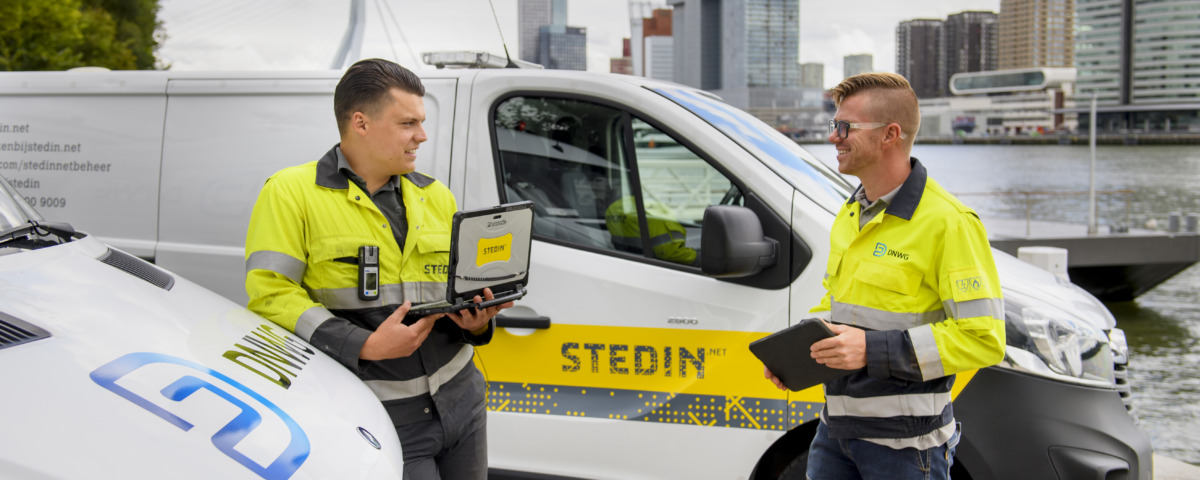Stedin and what it takes to maintain a fleet
For many organizations it is not possible or desirable to completely replace the fleet. This can also be the case for your organization, because, for example, you have to work all day at different locations or because a lease car is a valuable fringe benefit.
Whatever the reason, the fleet remains (for the time being) part of your organization. But there is something involved: high fuel costs, maintenance costs, a lot of CO2 emissions and a risk to the safety of your employees.
As an employer, you naturally want to do something about it. Fynch can help you with this. Below we explain what Fynch can mean for your organization based on an example from Stedin.
Stedin’s goals: safer, more economical and more sustainable driving
Stedin has a fleet of almost 2000 vehicles, mainly consisting of delivery vans.
When Stedin started the Fynch programme, also known as the Stedin Drivers Battle, it formulated three long-term main goals with a number of sub-objectives for the year 2019:
- To increase worker safety on the road:
- 15% fewer fines compared to 2018
- Reducing overloaded buses
- Motivating employees for a safe and economical driving style:
- Better measurability of driving behaviour, among other things due to better completed mileage when refueling (>70%)
- Higher driving style score
- Making mobility within the company more sustainable:
- 4% less fuel consumption and therefore 4% less CO2 emissions per kilometer compared to 2018
- Creating higher awareness of sustainability and safety
During this program, Stedin made use of the Fynch Platform, the ProDrive Learning online training and the accompanying Fynch Rewards Program. The KPIs that Stedin would actively measure with this were:
- Fuel consumption
- Fines
- Accuracy mileage
Safer and more sustainable driving: what exactly does that mean?
As a definition of safe driving, we formulated the following points:
- No hard acceleration / braking / cornering etc. (good driving style score from telematics)
- Keep the bus clean (return day)
- Vehicle not overloaded (return day)
- Loading safely (securing)
- Phone in holder
- Do not text / email on the way
- Less damage
- Fewer fines
We also set the following goals to increase fuel consumption awareness:
- Fill in a personal improvement plan for fuel consumption
- Fill in km well when refueling
- Monitor results to be viewed monthly
- Follow e-learning
With the above objectives and definitions in mind, Stedin set to work. But what were the results of this in the end?
Results: significant improvements in sustainable driving behaviour
Stedin employees started working on safer and more economical driving. This ultimately resulted in:
- An average decrease of 4.2% in the fuel consumption of drivers who have followed the ProDrive Learning training.
- The number of fines decreased by 22.1%.
- 95% of the drivers entered their mileage correctly.
Stedin thus saved on costs (fuel and maintenance), increased the safety of its employees on the road (fewer fines, higher driving style score) and reduced CO2 emissions.
Do you want to know how Fynch can help you to stimulate different travel behaviour? Or are you interested in how the Fynch program can help your organization? Please feel free to contact us.
